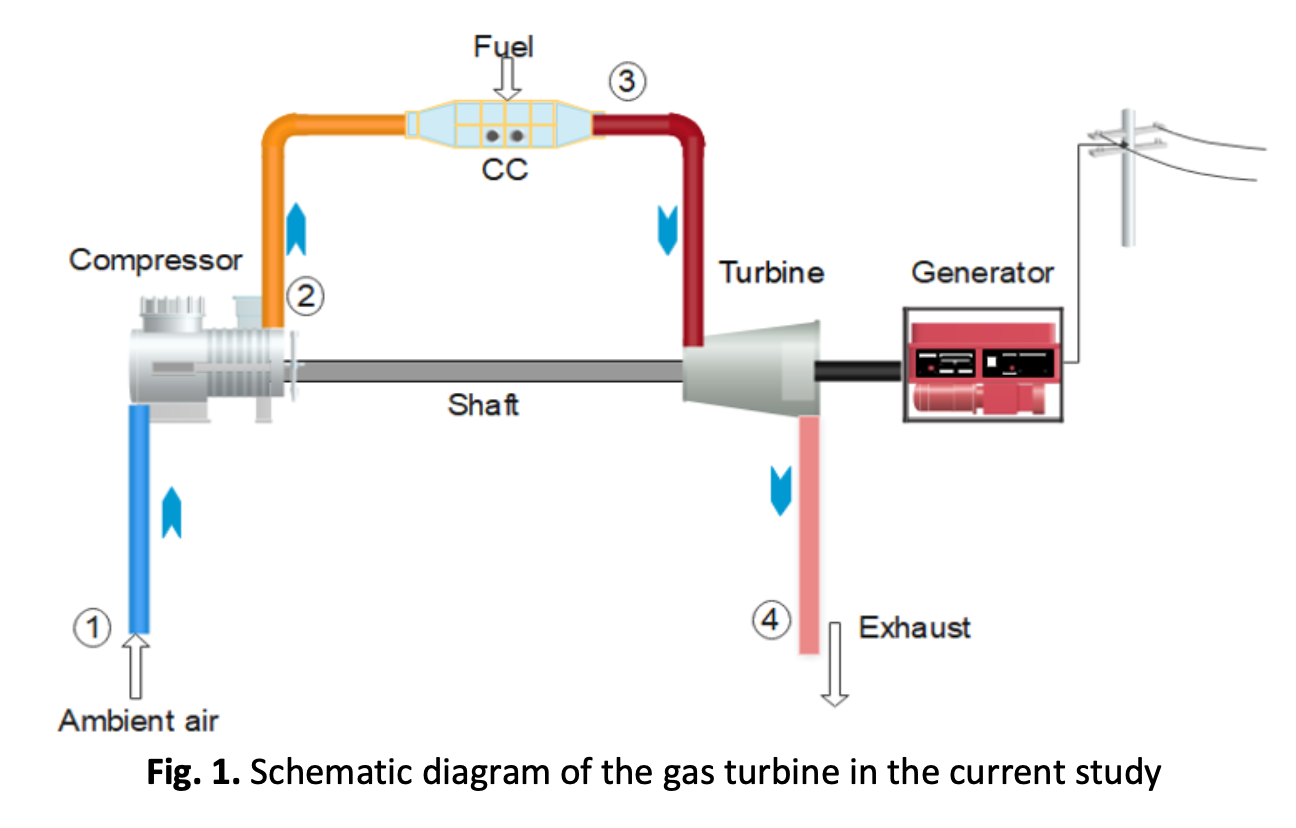Influence of Surrounding Air Temperature and Humidity upon the Performance of a Gas Turbine Power Plant
DOI:
https://doi.org/10.37934/arfmts.112.1.2237Keywords:
Gas turbines, ambient conditions, performance, energyAbstract
Nowadays, energy demand continuously rises while energy stocks are dwindling. Using current resources more effectively is crucial for the world. A wide method to effectively utilize energy is to generate electricity using thermal gas turbines (GT). One of the most important problems that gas turbines suffer from is high ambient air temperature especially in summer. The current paper details the effects of ambient conditions on the performance of a gas turbine through energy audits taking into account the influence of ambient conditions on the specific heat capacity ( , isentropic exponent ( ) as well as the gas constant of air . A computer program was developed to examine the operation of a power plant at various ambient temperatures and relative humidities. The ambient temperatures ranged from 0 to 45 ºC, with relative humidities from 10 to 90%. The obtained results show that a GT operated at increased inlet air temperatures is characterized by lower net power and thermal efficiency. At higher inlet air temperatures, increased relative humidity has a slight positive impact on the GT cycle net power and its thermal efficiency. Net output power of the GT decreased from 93.3 MW at 15 °C to 70 MW at 45 °C. Its efficiency decreased from 32.32% at 5 °C to 28.3% at 30 °C. Although fuel consumption is reduced, the heat rate as well and the specific fuel consumption (SFC) are enhanced. SFC increased by 5.36% with a 10 °C temperature rise in temperature at a constant relative humidity. Therefore, use of a gas turbine with inlet air cooling and humidification is appropriate for improved GT efficiency.
Downloads

































